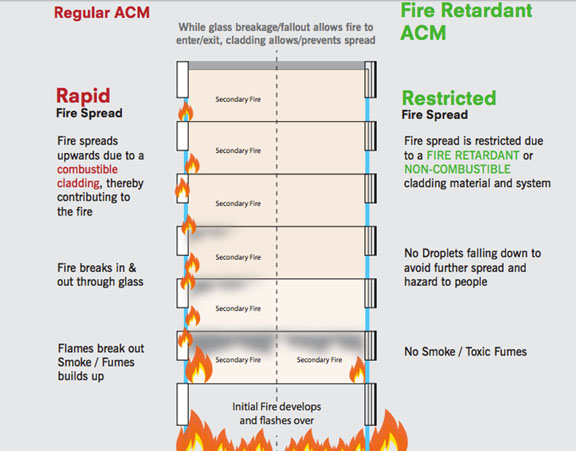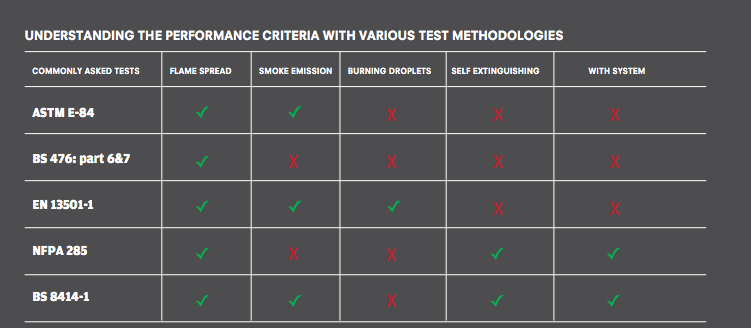

UNDERSTANDING FIRE RETARDANCY
Fire protection for your building begins at the planning stage. Minimizing fire risk, particularly in places with significant human traffic such as major sporting arenas, mass transit terminals, hospitals, schools and high-rise buildings has become increasingly complex and challenging. Globally, architects and building owners are required to meet stringent regulations aimed at protecting inhabitants and visitors but also building structure and surrounding environment from fire hazards, but irrespective of the regulations it is imperative for the users to choose the right grade of building materials which can minimize the damage to human lives and the structure.
A lot depends on using the right kind of products and systems, and utmost care has to be taken in choosing the right grade of Fire Retardant (FR) Aluminium Composite Materials (ACM) so as to mitigate the risk caused by fire. (Illustration on Page 3 shows the fire propagation in case of fire in a building). It is important to understand the difference between Fire Rating and Fire
Retardancy. Any product could have some degree of Fire Rating but that does not necessarily make it Fire Retardant. Usually, the products and systems have a reaction to fire and resistance to fire, in a certain way. It is essential to look at these both, and the factors that influence the performance of a Fire Retardant cladding solution in totality and not in isolation. These performance criteria are: · Lateral and Vertical spread of fire · Smoke emission · Droplets · Self-extinction of fire on the ACM.
Therefore, it is key to choose the right product and system in terms of performance in case of fire. But it is equally important to specify the right test methodology and standards to ensure selection of a ‘true’ Fire Retardant facade. The right test methodology has to be ideally a combination of product test like EN 13501-1 along with an intermediate-scale multi story test like NFPA 285 or BS 8414 which addresses most of the key performance criteria mentioned above. A ‘true’ Fire Retardant ACM should have Ideally recommended mix and density of non- combustible content in the core (not less than 70%). · Appropriate certifications from a credible 3rd party authority. Not sufficient to have mere test reports from samples provided by the applicant. Should be fixed using the recommended systems. There are simple methods to find out if the sample, that you have is a ‘true’ Fire Retardant ACM panel. Please see these videos to see how - http://alucobond.com.sg/videos/FR


Email: info.fasclad@gmail.com Phone #: 570-8546 / 721-6171
© Copyright 2017 CCSUI
HEAD OFFICE: #40 ST. DOMINIC ST., ITC COMPOUND, BRGY. BAGBAGUIN, VALENZUELA CITY, Metro Manila